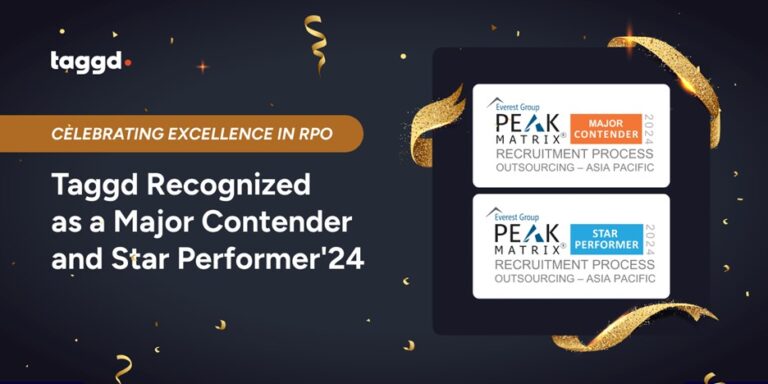Introduction
For a country with one of the youngest and most diverse populations – maintaining true inclusion where everyone feels equal, valued and empowered remains a constant challenge. As much as 36% of LGBTQ+ individuals face discrimination and 65% tread with caution in the workplace. These figures are more than statistics—they are the silent echoes of struggle that resonate within the walls of our workplaces.
We stand at the threshold of change, where the moral compass points us towards a future where every individual is celebrated for who they are. It’s time to dismantle the barriers of bias and build, in their stead, a sanctuary of support and respect. We need to be the architects of a new era where authenticity is the cornerstone of our corporate ethos. Let’s pledge to create a tapestry of talent that is as diverse as it is dynamic, fostering a culture where innovation is born from the very essence of inclusion.
This is not a mere policy shift; it’s a profound movement towards a world where love and respect outshine the shadows of fear and prejudice. Together, we will ensure our workplaces are not just spaces of productivity, but bastions of humanity’s best values—
To cultivate an environment where every employee feels equal, accepted and thrives, regardless of their gender identity or sexual orientation, organizations must sow the seeds of inclusivity. Here’s how:
- Conduct Equity Audits: Organizations and leadership might think they are doing well when it comes to having equity at work but conducting equity audits can help get a clearer picture. By conducting regular audits organizations can identify areas where biases like homophobia or sexism may hinder inclusivity. Also, engaging with LGBTQ+ employees to understand their experiences and then implementing changes based on their feedback can go a long way.
- Ensure C-Suite Allies: Senior leaders should visibly support these initiatives by actively participating in Pride events and publicly endorsing LGBTQ+ causes. They must take a proactive stance against discrimination, implementing and enforcing policies that promote inclusivity and equity. This visible leadership not only demonstrates a commitment to diversity, equity, and inclusion (DEI) but also sets a precedent for the entire organization. When top executives lead by example, it cultivates a culture of acceptance and respect, encouraging all employees to embrace and support their LGBTQ+ colleagues, thereby fostering a more inclusive workplace environment.
- Use Inclusive Language: Using inclusive language is crucial in fostering a respectful and valued work environment. Adopting gender-neutral terms helps avoid assumptions about people’s identities and promotes equality. Encouraging employees to share their preferred pronouns during introductions, in email signatures, and on name tags can make a significant difference. This practice not only affirms individuals’ identities but also educates and normalizes the use of diverse pronouns within the workplace. By integrating these simple yet powerful practices, organizations value every employee’s unique identity.
- Support Employee Resource Groups (ERGs): Supporting ERGs is essential for nurturing connections among employees and fostering a sense of community and belonging. ERGs provide a platform for employees to connect across teams, functions, and levels, offering critical support and resources. By encouraging participation in ERGs, organizations can enhance employee engagement, build high-trust relationships, and improve retention. These groups empower employees to flourish by creating inclusive spaces where diverse perspectives are valued and shared experiences are acknowledged, thereby strengthening the overall organizational culture.
- Offer Inclusive Benefits: This is essential for supporting the diverse needs of LGBTQ+ employees. This includes providing comprehensive healthcare coverage for transition-related care, such as hormone therapy and gender-affirming surgeries, which are vital for the well-being of transgender employees. Additionally, equitable family planning options, such as fertility treatments and adoption support, ensure that all employees can build families regardless of their sexual orientation or gender identity. By prioritizing these benefits, companies demonstrate a commitment to equality and create an inclusive workplace where every employee feels valued and supported.
- Focus on Recruitment, Promotion, and Coaching: Actively recruiting LGBTQ+ individuals help create a talent pool rich with diverse perspectives and experiences. Supporting their growth through mentorship, tailored professional development programs, and inclusive policies ensures they can thrive within the organization. Promoting LGBTQ+ employees into leadership roles not only enhances representation but also sets a positive example, breaking down stereotypes and demonstrating the organization’s commitment to diversity and inclusion. This comprehensive approach strengthens the workplace culture and drives innovation and success.
- Promote Ongoing Education & Host Conferences: Promoting ongoing education and hosting conferences on LGBTQ+ issues are critical for fostering an inclusive workplace culture. Regular training programs help employees understand and respect LGBTQ+ identities, enhancing their allyship and reducing biases. Conferences provide platforms to share insights and best practices, encouraging a collaborative approach to diversity and inclusion. Such initiatives ensure that inclusivity is a continuous effort, ingrained in the company’s values and practices.







